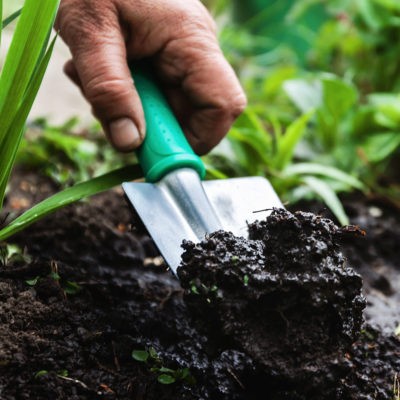We all appreciate that we cannot have gardens without soil. Soil is the most fundamental factor in any gardening.

What is soil?
Soil is a mixture of the weathered rocks that once covered the earth’s surface, mineral elements, decomposing remnants of plants, trees, micro-organisms and animals, and the living organisms living in the soil.
These form the foundation for sustainable and eco-friendly gardens providing a wide range of health and financial benefits.
The importance of soil includes;
- The soil is responsible for the absorption of rainwater for plant growth. The ground is also responsible for the prevention of floods.
- The soil removes contaminants and purifies groundwater.
- The soil also allows vegetation to absorb the groundwater for plant growth while acting as a water reservoir for animals and humans.
- The soil is responsible for storing carbon, which in turn gives the land its water retention capability and fertility.
- The soil also provides a home to various micro-organisms, insects, and worms that keep the balance of nature.
- The soil also supports plants and vegetation, allowing the roots to support the trunks and branches.
Soil characteristics to look out for
Soil Texture
Soil comprises three components, which are silt, clay, and sand. Each of the three parts has varying soil textures. The composition of these three components will generally determine the overall soil texture.
The soil texture determines the pore size and the drainage capability of the soil. These are critical to vegetation growth.
The pore size will determine the amount of oxygen the soil can accommodate and the capacity to hold nutrients. As we know, oxygen is vital for plant and organism growth.
Soil Structure
The soil structure will determine how the soil forms crumbs and aggregates together, usually called soil peds. The structure of the earth will dictate its permeability and how well it can hold moisture and nutrients.
The soil structure will also dictate how well plant roots can penetrate the soil and support germination and growth.
Soil PH
Soil PH refers to the levels of its acidity and alkalinity. The PH will range from 0 – 14, whereby PH 7 represents neutral. From 0 – 7, the soil becomes less acidic, while from 7 – 14, the soil increments the alkalinity.
Different plants have different soil PH preferences, which is a factor to consider while choosing the right plants for your garden. The PH of the soil also dictates the availability of nutrients and controls the micro-organisms in the land. Check with Calgary Yard Care services for the best PH levels for different vegetation.
Soil porosity or soil compaction
Porosity is concerned with the number of holes (pores) that soil has. Mostly measured as a percentage of the total soil volume, this is a critical characteristic that determines many soil properties.
Highly compacted soils will negatively affect the existence of essential micro-organisms and restrict the penetration of plant roots. It will also hurt the ability of soil to absorb rainwater.
Soil color
Soil color is crucial as it allows one to know the soil characteristics such as the availability of nutrients and age.
Dark soil will generally indicate high levels of organic matter in the ground.


